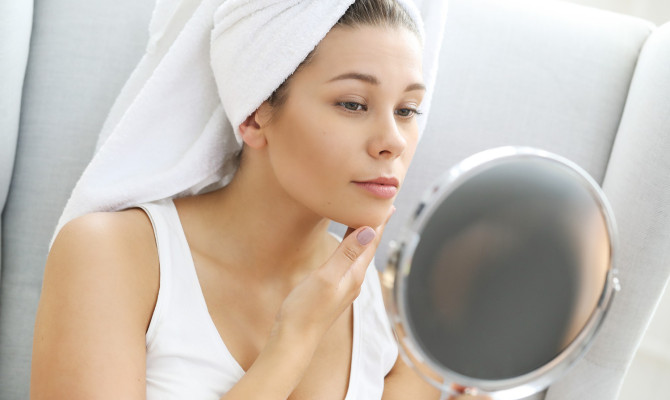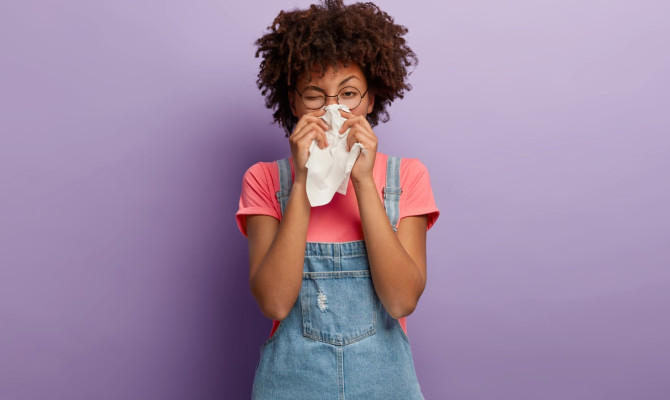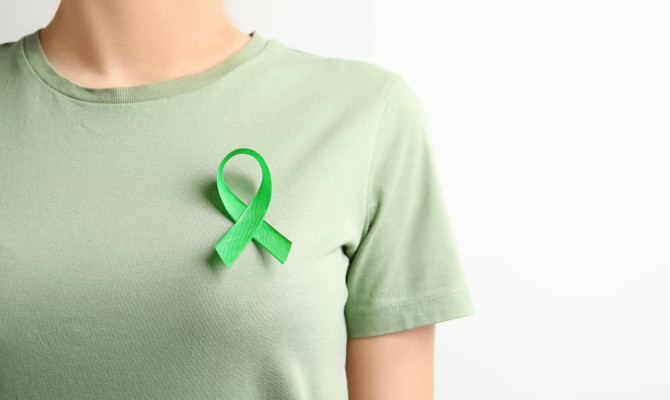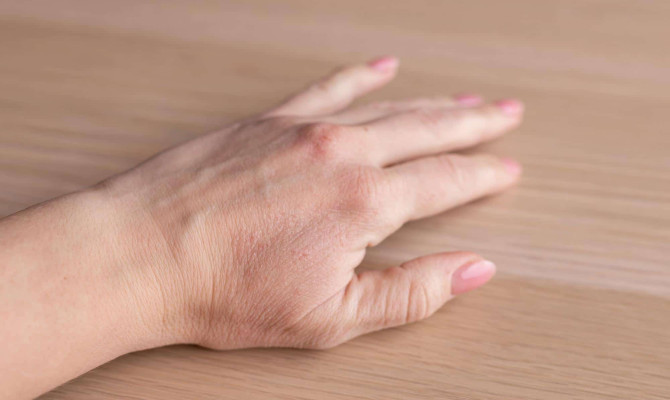Shingles: Causes, Symptoms, Treatment & Prevention

- Shingles
- 20 Oct 2023
Introduction
Shingles
Shingles, scientifically known as herpes zoster, is a viral infection notorious for causing an agonizing skin rash. 1 Introduction | Researched based study from National Institutes of Health It occurs when the varicella-zoster virus, responsible for causing chickenpox, becomes active again in the body. While shingles is not a new medical phenomenon, ongoing research has shed light on its underlying causes, symptoms, treatment modalities, and preventive strategies. 1 Introduction | Researched based study from National Institutes of Health

Causes
Causes for Shingles
Varicella-Zoster Virus (VZV):
- Shingles occurs when the varicella-zoster virus (VZV) reactivates in those who have had chickenpox before. 2 Causes | Researched based study from National Institutes of Health
- Following the recovery from chickenpox, the virus can stay dormant in nerve cells located close to the spine and brain. Varicella can be incubated for 10 to 21 days.
- Upon reactivation, it journeys along the nerves to reach the skin’s surface, leading to the characteristic painful rash and blisters associated with shingles.
- It typically spreads through airborne respiratory droplets or direct contact with fluid from versicolor varicella lesions.
Weakening Immune System:
- The likelihood of developing shingles can increase if your immune system is weakened due to factors such as aging, stress, illness, or medication.
- The virus is typically kept under control by a strong immune system. The virus initiates its replication in the respiratory tract, invading nearby tissues. 2 Causes | Researched based study from National Institutes of Health
Factors that increase the likelihood of developing shingles:
Age:
- Shingles is more commonly seen in older adults, typically affecting individuals aged 50 and above, as the effectiveness of the immune system tends to decline with age.
Prior to Develop Chickenpox:
- To develop shingles, it’s necessary to have had a prior bout of chickenpox since the condition is caused by the same virus.
Stress:
- Elevated stress levels can potentially weaken the immune system, triggering the reactivation of the varicella-zoster virus and leading to shingles.
Certain Conditions:
- Certain medical conditions like HIV/AIDS, cancer, or autoimmune disorders can compromise the immune system, increasing an individual’s vulnerability to shingles.
Medications:
- Some medications, such as those used in organ transplant recipients or for treating certain diseases, can suppress the immune system and increase the risk of shingles.
Gender:
- Shingles can impact individuals of both genders, although some research indicates that women may have a slightly higher likelihood of developing the condition. 2 Causes | Researched based study from National Institutes of Health
Symptoms
Signs & Symptoms of Shingles
- Pain and Sensation Changes
- Rash
- Fluid-Filled Blisters
- Itching
- Fever and Fatigue
- Headache
- Sensitivity to Light
- Flu-Like Symptoms
- Nerve Pain
Pain and Sensation Changes:
- The first and often earliest sign of shingles is usually localized pain, burning, tingling, or itching in a specific area of the skin.
- Usually, this region tends to be on either the side of the body or the face. 1 Symptoms | Researched based study from National Institutes of Health
Rash:
- Within a few days of experiencing pain, a red, raised rash appears.
- It often consists of fluid-filled blisters that resemble chickenpox lesions but are clustered in a band or belt-like pattern along a nerve pathway.
- This rash is usually painful and can be very sensitive to touch. 3 Symptoms | Researched based study from JAMA Network
Fluid-Filled Blisters:
- The rash progresses to form small, fluid-filled blisters. These blisters may break open, ooze, and then crust over in several days.3 Symptoms | Researched based study from JAMA Network
Itching:
- Itching is a common symptom, and it can be quite intense in some cases, causing discomfort.
Fever and Fatigue:
- Some individuals with shingles may experience mild to moderate fever, along with fatigue and general malaise.
Headache:
- Headaches are another possible symptom, particularly when the rash appears on the face. 3 Symptoms | Researched based study from JAMA Network
Sensitivity to Light:
- If the shingles outbreak affects the eye (known as ophthalmic shingles), sensitivity to light and eye-related symptoms may occur.
Flu-Like Symptoms:
- In some cases, individuals may develop symptoms similar to the flu, including chills, muscle aches, and joint pain.
Nerve Pain:
- Once the rash has fully healed, certain individuals might encounter lingering nerve pain in the area that was affected.
- The clinical term for this state is postherpetic neuralgia, which is commonly known as PHN. 2 Symptoms | Researched based study from National Institutes of Health
Complications
Shingles can Lead to Complications such as
- Bacterial skin infections
- Pneumonia if it affects the lungs
- Vision problems if it involves the eye. 4 Complications | Researched based study from Oxford Academic
Differential Diagnosis
What can be Mistaken for Shingles?
- Contact Dermatitis: Skin irritation due to contact with an allergen or irritant.
- Herpes Simplex: Oral or genital herpes can produce similar-looking blisters but are caused by a distinct virus.
- Dermatitis or Eczema: Skin ailments characterized by redness, itching, and rashes. 5 Differential Diagnosis | Researched based study from Biomed Central
- Impetigo: A bacterial skin infection that can manifest as blister-like sores.
- Allergic Reactions: Skin rashes and blisters can be caused by certain allergic reactions
Treatment
Shingles Treatment
Antiviral Medications:
- Doctors frequently prescribe medications like acyclovir, valacyclovir, or famciclovir to diminish the intensity and duration of shingles episodes.
- These drugs function by inhibiting the reproduction of the varicella-zoster virus. 6 Treatment | Researched based study from Oxford Academic
Pain Management:
- You can find relief from pain and discomfort through easily accessible pain relievers just as ibuprofen or acetaminophen.
- However, in certain situations, more potent prescription pain medications might be required.
Topical Creams:
- Calamine lotion or lidocaine-containing creams can provide relief from itching and discomfort caused by the rash.
Antiviral Eye Drops:
- If shingles affects the eye (ophthalmic shingles), antiviral eye drops may be prescribed to prevent complications and manage symptoms.
Cool Compresses:
- You can find relief from itching and burning by applying cool, moist cloths or compresses to the rash.
Rest and Hydration:
- Adequate rest and staying well-hydrated are essential for a quicker recovery.
Postherpetic Neuralgia (PHN) Management:
- For individuals who develop persistent nerve pain after the rash has healed (PHN), treatments such as prescription medications, nerve blocks, or topical treatments may be recommended. 6 Treatment | Researched based study from Oxford Academic
Prevention
Methods to Prevent Shingles
- Vaccination: Getting vaccinated is the most potent method to prevent shingles. The Shingrix vaccine is advisable for individuals aged 50 and above, and it notably lowers the chances of both experiencing shingles and its associated complications.
- Vaccination Timing: Following the recommended vaccination schedule is crucial. Two shots are typically given for Shingrix, and the second dose is given within a 2-to-6-month window after the first. 7 Prevention | Researched based study from National Institutes of Health
- Boosting Immunity: Promoting a healthy lifestyle through a balanced diet, consistent exercise, and sufficient sleep can fortify your immune system, potentially lowering the likelihood of developing shingles.
- Stress Management: High stress levels can weaken the immune system and potentially trigger shingles in individuals who are already infected with the varicella-zoster virus. Stress reduction techniques, such as relaxation exercises or mindfulness, can be beneficial.
- Avoiding Contact: When there is an active shingles outbreak, it’s crucial to avoid close contact. Those who have not had chickenpox or those with weaker immune systems. 7 Prevention | Researched based study from National Institutes of Health
- Good Hygiene: Practicing good hand hygiene, such as regular handwashing, can help prevent the spread of the varicella-zoster virus.
- Eye Protection: If shingles affects the eye (ophthalmic shingles), seek medical attention promptly to prevent complications. Wearing an eye patch or keeping the eye clean may be necessary.
- Healthcare Advice: Consult a healthcare professional for advice if you are at higher risk of shingles due to age or underlying medical conditions. They can provide personalized recommendations for prevention.
- Post-Exposure Prophylaxis: In certain situations, antiviral medications may be prescribed to individuals who have been in close contact with someone with shingles, especially if they have never had chickenpox or are at high risk of complications.
- Educate Yourself: Understanding the symptoms and risk factors of shingles can help you recognize it early and seek prompt medical attention.
FAQs
Frequently asked Questions About Shingles
Q. Is shingles dangerous?
- While shingles typically isn’t life-threatening, it can cause discomfort and potentially result in complications.
Q. Is Shingles Contagious?
- Shingles is not easily transmitted, but the varicella-zoster virus that is behind it can spread to those who have not had chickenpox. This transmission requires direct contact with the shingles rash. 2 FAQs | Researched based study from National Institutes of Health
Q. What causes Shingles in Adults?
- Shingles in adults arises from the reawakening of the varicella-zoster virus, which remains dormant in nerve cells following prior chickenpox infection.
Takeaway
Shingles: A Painful Viral Infection that is Preventable
Shingles is a painful viral infection that results from the reawakening of the varicella-zoster virus. 8 Takeaway | Researched based study from National Institutes of Health While it typically doesn’t pose a threat to life, shingles can be uncomfortable and may potentially result in complications. The shingles vaccine offers a valuable preventive measure, particularly for older adults.2 Takeaway | Researched based study from National Institutes of Health As research continues, advancements in the understanding and management of shingles are likely to improve outcomes for those affected by this condition.
Any feedback on this article?
 This Articles content was accurate
This Articles content was accurate Very Informative Article
Very Informative Article I have a question or a comment
I have a question or a comment
 This article contains inaccurate content
This article contains inaccurate content This article was not helpful
This article was not helpful I have a question or a comment
I have a question or a comment
We appreciate your helpful feedback!
Checkout our social pages
References
-
National Institutes of Health
Introduction | Symptoms
-
National Institutes of Health
Causes | Symptoms | FAQs | Takeaway
-
JAMA Network
Symptoms
-
Oxford Academic
Complications
-
BioMed Central
Differential Diagnosis
-
Oxford Academic
Treatment
-
National Institutes of Health
Prevention
-
National Institutes of Health
Takeaway






































